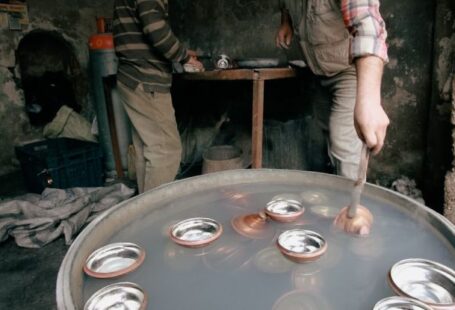**How Does Modern Rome Contrast with Its Ancient Past?**
Rome, the eternal city, holds within its bounds a rich tapestry of history that intertwines the ancient with the modern. The juxtaposition of ancient ruins against contemporary structures paints a vivid picture of the city’s evolution through time. As one wanders through the bustling streets of Rome, it becomes evident how the city has managed to preserve its past while embracing the present. This article delves into the stark contrasts between modern Rome and its ancient past, shedding light on how the city has adapted to the changing tides of time.
**Architectural Marvels: Past vs. Present**
One of the most striking differences between ancient Rome and its modern counterpart lies in the architectural landscape of the city. The remnants of ancient structures such as the Colosseum, Pantheon, and Roman Forum stand as testament to the ingenuity and grandeur of Roman engineering. These iconic landmarks serve as a window to the city’s glorious past, showcasing the intricate craftsmanship and sheer magnificence of ancient Roman architecture.
In contrast, modern Rome boasts a diverse array of architectural styles that range from Renaissance and Baroque to contemporary designs. The cityscape is adorned with ornate palazzos, elegant piazzas, and sleek skyscrapers, reflecting a fusion of old-world charm and modern aesthetics. While the ancient ruins exude a sense of timelessness and grandiosity, the modern buildings add a touch of sophistication and innovation to Rome’s architectural identity.
**Cultural Heritage: Tradition meets Modernity**
Rome’s cultural heritage is deeply rooted in its ancient past, with traditions and customs passed down through generations. The city’s rich artistic legacy, encompassing masterpieces by renowned artists such as Michelangelo, Bernini, and Caravaggio, continues to inspire awe and admiration. From the awe-inspiring frescoes adorning the Sistine Chapel to the majestic sculptures of the Vatican Museums, Rome’s artistic heritage is a treasure trove of beauty and creativity.
In the modern era, Rome has embraced cultural diversity and creativity, giving rise to a vibrant arts scene that thrives on innovation and experimentation. Contemporary art galleries, street art installations, and cultural events have breathed new life into the city’s cultural landscape, bridging the gap between tradition and modernity. While ancient Rome celebrated classical art forms and architectural marvels, modern Rome embraces a more eclectic and inclusive approach to cultural expression.
**Urban Development: Balancing the Past and Future**
The urban development of Rome serves as a reflection of the city’s continuous evolution and adaptation to modernity. While ancient Rome was characterized by its dense network of narrow streets, grandiose monuments, and public squares, modern Rome has undergone significant urban planning initiatives to accommodate the needs of a growing population. The city’s infrastructure has been upgraded to include modern amenities such as transportation systems, commercial hubs, and residential complexes, transforming Rome into a bustling metropolis.
Despite the modernization efforts, Rome has managed to preserve its historic charm and architectural heritage, striking a delicate balance between the past and the future. Preservation initiatives such as UNESCO World Heritage sites designation and conservation projects have ensured that the city’s ancient landmarks remain intact, serving as a reminder of Rome’s glorious past. The harmonious coexistence of ancient ruins and modern structures is a testament to Rome’s ability to embrace change without forsaking its cultural legacy.
**In Conclusion: Navigating the Sands of Time**
As one navigates the streets of Rome, it becomes apparent that the city is a living testament to the passage of time. The juxtaposition of ancient ruins against modern edifices creates a visual tapestry that encapsulates Rome’s enduring spirit of resilience and adaptability. While the city has undergone profound transformations over the centuries, its essence remains rooted in the legacy of its ancient past. By embracing the past while forging ahead into the future, Rome continues to stand as a timeless beacon of history, culture, and innovation.





